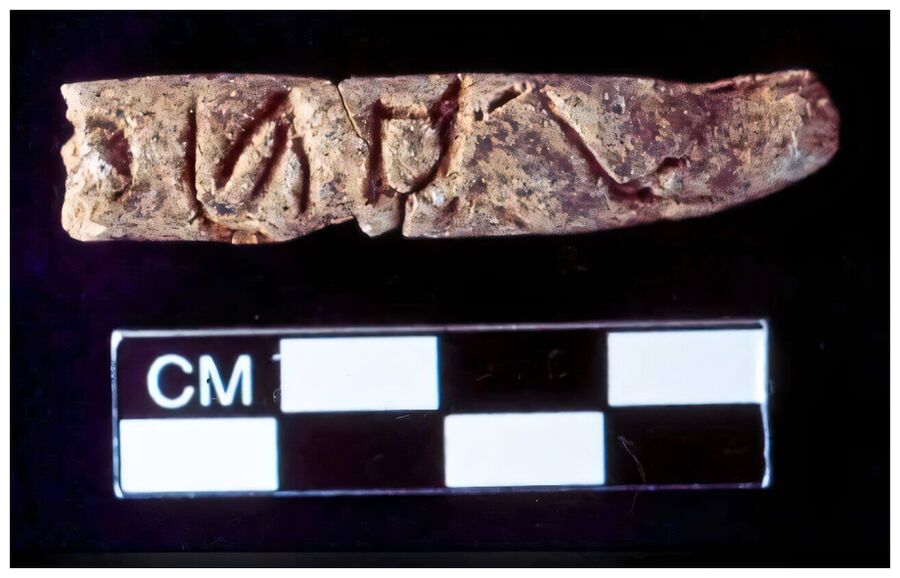
© Glenn Schwartz, Johns Hopkins UniversityClay objects roughly the size of fingers were discovered during a dig at the ancient city of Umm el-Marra. The engraved symbols may be part of the earliest known alphabet.
The writing, which is dated to around 2400 BCE, precedes other known alphabetic scripts by roughly 500 years, upending what archaeologists know about where alphabets came from, how they are shared across societies, and what that could mean for early urban civilizations.
"Alphabets revolutionized writing by making it accessible to people beyond royalty and the socially elite. Alphabetic writing changed the way people lived, how they thought, how they communicated," said Glenn Schwartz, a professor of archaeology at Johns Hopkins University who discovered the clay cylinders. "And this new discovery shows that people were experimenting with new communication technologies much earlier and in a different location than we had imagined before now."
Schwartz will share details of his discovery on Thursday, Nov. 21, at the American Society of Overseas Research's Annual Meeting.
A Near Eastern archaeologist, Schwartz studies how early urban areas developed throughout Syria and how smaller cities emerged in the region. With colleagues from the University of Amsterdam, he co-directed a 16-year-long archaeological dig at Tell Umm-el Marra, one of the first medium-sized urban centers that popped up in western Syria.
At Umm-el Marra, the archaeologists uncovered tombs dating back to the Early Bronze Age. One of the best-preserved tombs contained six skeletons, gold and silver jewelry, cookware, a spearhead, and intact pottery vessels. Next to the pottery, the researchers found four lightly baked clay cylinders with what seemed to be alphabetic writing on them.
"The cylinders were perforated, so I'm imagining a string tethering them to another object to act as a label. Maybe they detail the contents of a vessel, or maybe where the vessel came from, or who it belonged to," Schwartz said. "Without a means to translate the writing, we can only speculate."
Using carbon-14 dating techniques, researchers confirmed the ages of the tombs, the artifacts, and the writing.
"Previously, scholars thought the alphabet was invented in or around Egypt sometime after 1900 BCE," Schwartz said. "But our artifacts are older and from a different area on the map, suggesting the alphabet may have an entirely different origin story than we thought."
Source: Johns Hopkins University
Source link

